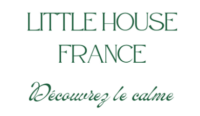Dust clings to my boots as I scrub plaster at 11 Rue Riverial—my soon-to-be rental, a quiet corner still finding its shape but woven into our village’s story. Last week, I stepped out, empty-handed, onto the Voie Verte—the Chemin des Droits de l’Homme—a green thread tying Albi to Castres. It’s more than a trail; it’s alive.

In 1869, trains hummed here—steam curling over towns and villages seeking their place, hauling coal and voices from Albi’s spires to Castres’ bends. I hear the clatter, the whistle’s fade as cars rolled in. By the 20th century, silence settled—rust and ivy creeping over tracks, a quiet echoed in the villages left behind. Then, in the 2000s, the Tarn Department stirred it awake—44 kilometers reborn as a greenway for bikes, boots, and wanderers. Now, wildflowers spill through gravel, bird calls soften the air. I snapped a shot—[insert: “wildflowers over old rails”]—and felt it: this is the draw, magnetic.
It’s so close I see its entrance from the cottage door—[insert: “trail peeking from the stoop”]. Not just a walk (though Montagne Noire views might hush you), it’s a dance with yesterday—signs murmur of lost stations, curves trace old engines. I’ve pedalled it, paused on benches, watched a local cowboy gentle a horse—yes, cowboys roam here! It’s peace, the kind I’m coaxing into these walls—beams bared, a garden stirring.

When you arrive, bring your bike (or hire one from the village’s new spot—details waiting inside) or your shoes. Roll past vineyards, linger where I did—[insert: “me, dusty, trailside”]—and feel the Tarn’s pull. This house, like the path, is old bones finding new breath. By summer, it’s yours to claim: a greenway base, a nook for your tales.
What’s your escape—morning ride, dusk wander? Tell me—I’m listening, hammer stilled, dreaming of your first coffee here, trail calling.
